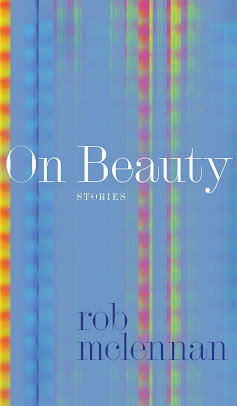My work is to point out the inescapability of neglect and call for a slower, deeper interaction with it. As we reached the end of our inaugural experience of neglect, our attention returned to skin, the sonic sibling of skim.jennifer h. fortin, GIVE OR TAKE
Sugar Grove NC: Produced as
“Ark Press #2” is Oakland-based poet, visual artist, and freelance
writer/editor Pepper Luboff’s new chapbook, the absolutely striking And when the time for the breaking
(2013). Luboff’s breaks, halts and staggers are held together through the most
tantalizing lyric flow, sometimes breathless, sometimes staccato and even
written out in an extended burst. The first of the three-page poem “Metaphor:
Lake Merritt” reads:
:
Night water wavelets
muscle back the city lights’ shining
the lake’s necklace,
head and taillights’ intervals,
buildings and rooms
flicked on.
The path around flecked
with bird shit, down shed in
flight,
and broken mussel shells.
A coot flips at a right
angle
(carmine eye arcing)
submerges. Coots
sink their heads,
leaving
bobbing commas.
An egret’s plumes sign
sounds.
A cormorant looms, moon-bathing—
fist-like epaulets on its shoulders.
It
draws on its wings;
the fists behind uncurl a little,
a
benediction gesture:
people, whom distance diminishes, squat
on the dock,
swooshing lines
into the lake.
Fishermen. They still; wait for tugs.
Two joggers p’t, p’t, p’t, p’t, pant, enlarge and
louden. Passing
one says, I think:
Kelowna BC: Having only
discovered them recently, Sean Johnston was good enough to send over copies of
the chapbook series produced by Ryga: A Journal of Provocations – Jake Kennedy’s Studies (2009), Sheri Benning’s Dollhouse (2009), Lee Maracle’s Raven Can Do Anything (2010), Chris Hutchinson’s Not Unlike (2010) and Ed Allen’s When Everybody Was Upset
(2010). Unfortunately, Johnston says the series no longer exists, which is
disappointing. Produced in editions of one hundred copies each, these
gracefully-designed chapbooks are by authors Canadian and American alike, with
a strong eye, it would seem, on emerging writers in the Kelowna, British
Columbia area. One of the highlights of this series is in the short introduction
that opens each publication, all but one composed by Johnston himself (the
introduction to Maracle’s chapbook was written by Frances Greenslade). Johnston’s
introduction, “A New Objectivity,” to Kennedy’s chapbook (a number of poems
that ended up in his 2011 BookThug collection Apollinaire’s Speech to the War Medic) reads:
Jake Kennedy’s poems
are informed by an impulse toward truth, despite the erudition and education of
the postmodern artist and reader, despite the fact that we are told there is no
such thing. It’s clear the truth is flawed – from the moment of its
articulation, at least, but maybe from the moment of its conception. The easy
way out, then, is to deny the impulse to move toward it, to give in to the idea
that we live in the intellect, which forbids truth, and not in the world, which
demands it.
As one of the poems
asks: “Why not start from belief?” Why not start from what we can hold and work
our way outward from there? Each object is its own centre and we are, with
Kennedy’s poems, caught in its rings, considering our place in the world, not
the world’s confusion surrounding us.
Kennedy begins in the
world with these meditations on material objects – grass, trees, bullets, the
screen of a drive-in – and moves outward from them into a world that is wild
and domestic at the same time, a world that is inclusive enough to include the heart
in its intellectual investigation of life. The tiger, to paraphrase one poem,
is not concerned if its stalking measures up to other performances of stalking –
it’s out for blood. It hunts to survive.
One
of the most compelling titles in the series is Alberta poet Sheri Benning’s
memoir-essay Dollhouse, writing on
ideas of home and place, her childhood and sister, as well as directly on her
sister, Heather Benning’s documentary/installation “The Dollhouse” – “a suite
of 30 photographs that present the transformation of an abandoned farmhouse in
rural Manitoba into a life-sized dollhouse.”
As children we relate to people and objects with a
directness unshackled by the protective cynicism of adulthood; we seek
security, but remain open to the world, allow ourselves the sigh of comfort in
the place of a loved one’s arms, or in the quiet conversations with a favourite
doll. Tuan suggests that this openness grants children the ability to know the
world more sensuously than adults, adding that this lost childhood gift of
receptivity ‘is one reason why the adult cannot go home again.”






